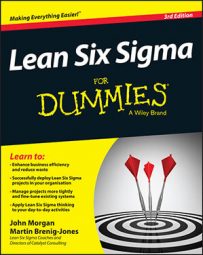The ability to storyboard is a core skill for Green and Black Belts. The format can be standardised only so far, but here are some key points to help you:
DMAIC storyboards are usually created in Power Point, which enables easy update, learning, and sharing. It's also a good format for tollgate reviews or if you are applying for certification and need to present your project to an Assessor.
You don't need a lot of detail — concentrate on the high level story. Good practice is around 15 to 25 slides, beginning with a title slide providing a little background or context.
You can keep more detailed information about the project in a separate folder to review if required or simply append additional slides with this backup detail to the end of your storyboard.
Storyboards don't need to be neatly typed and tidy. If you run a workshop or team session charting things on a flipchart, take a photo and insert it into the slide, as appropriate.
The DMAIC phases provide the framework for the storyboard, but remember to highlight the people issues of managing change, the stakeholder analysis and management, for example, and how you've addressed the 'A' factor of the E = Q x A equation.
The effectiveness of an improvement project or, indeed, the deployment of Lean Six Sigma thinking hinges on two broad factors that have been put into context by George Eckes the Chief Executive Officer of a Colorado-based consulting group and a former psychologist. He came up with the E = Q x A formula to help express the importance of the soft stuff:
E = Effectiveness: This represents the effectiveness of the implementation, which depends on the quality of the solution and the level of acceptance.
Q = The quality of the solution: An ideal solution may have been identified, but its effectiveness depends on how well that it's accepted.
A = The level of acceptance of the solution: The level of acceptance is key, because it has a multiple effect on the overall success of the implementation.
Define the problem as specifically as possible and include the improvement charter with a quantified problem statement and goal statement, even if these are estimates — say so if this is the case. The charter will need updating as you move through the DMAIC phases and find out more about the process and the problem your tackling.
Measure is all about how the work gets done and how well, so your storyboard is likely to include Process or Value Stream Maps and data displays such as Control Charts, for example. The maps might well be photos of a brown paper and sticky notes exercise. Remember to update the improvement charter and show the changes.
In the Analyse phase, you're a detective looking to find the root cause. You may well be using techniques such as the Fishbone and Interrelationship Diagrams, or using Pareto analysis or statistical tests in some way. Your storyboard needs to show how you determined the root cause.
For the Improve phase, the storyboard needs to show how you went about generating potential solutions, the method you used to select the most suitable, including the selection criteria involved, and the discoveries you made in testing the solution in a pilot. You may well need a slide for each of these three stages to show the outputs from team workshops or brainstorming sessions, for example, the assumptions made in selection, and the results from the pilot, which might also have given you the opportunity to carry out Failure Modes Effect Analysis (FMEA) to highlight prevention opportunities.
The key storyboard items for the Control phase is be the Control Plan and the results following the implementation of your solution, though remember these may take a little while to come through.
The tollgates provide an opportunity to update your improvement charter and storyboard. They also enable you to take stock of the benefits accruing and the financial details; for example, reductions in errors, improvements in processing time, and customer satisfaction. In determining the benefits and financial details, ensure that you record the assumptions behind your estimates or calculations, as you may need to explain these to others in the organisation.
Maintaining an up-to-date storyboard as you work your way through the DMAIC phases helps you prepare for the reviews and share discoveries.
Some organisations implementing Lean Six Sigma don't bother with storyboarding. As a result, people miss the importance of this technique as they strive to meet project objectives and schedules. Ignoring the use of storyboarding is short-sighted: if you don't capture the discoveries, challenges and a-ha moments of a project, the rest of the organisation is none the wiser and potentially makes the same discoveries and overcomes the same challenges over and over again.

